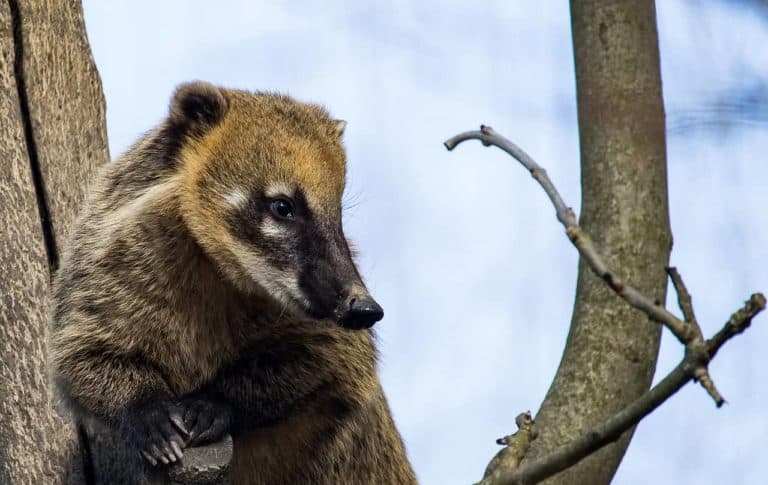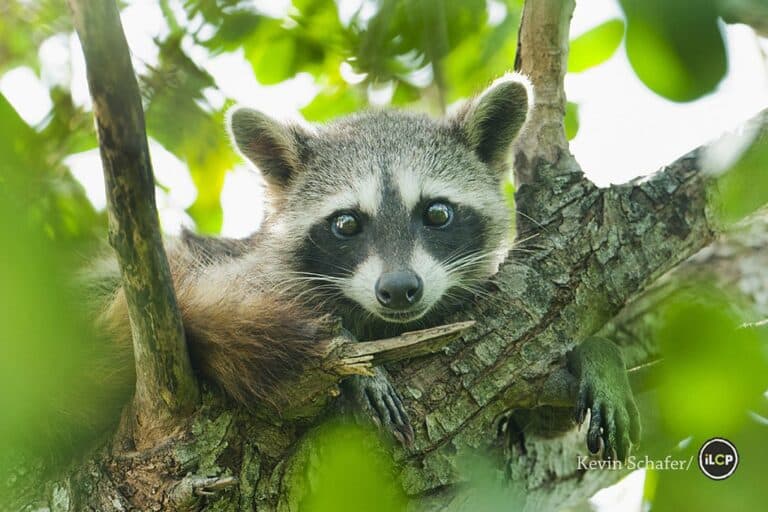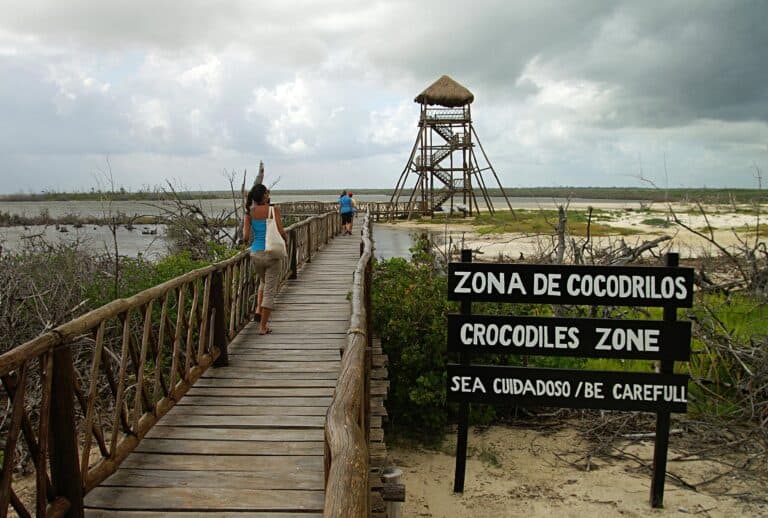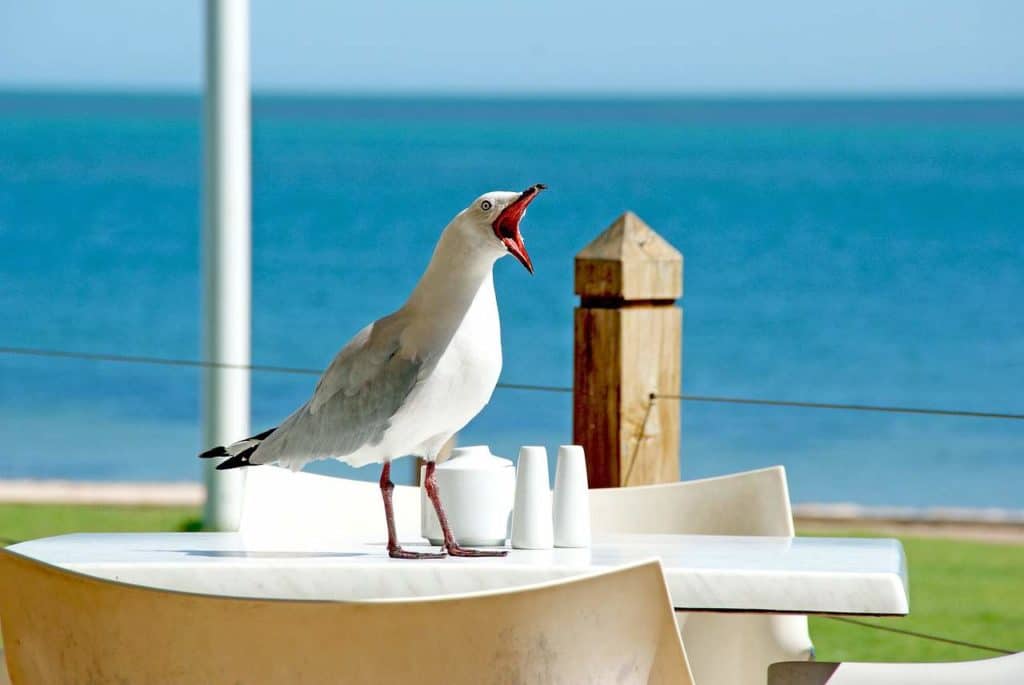Discover the Hidden Wild Inhabitants of Cozumel, Mexico
Are there wild animals on Cozumel? You may wonder. Yes, indeed! The tropical paradise of Cozumel, nestled in the Caribbean Sea off the coast of Mexico’s Yucatan Peninsula, is not just a bustling tourist hotspot. It’s also a haven for a host of indigenous creatures, each with its distinctive charm and fascinating life story. This article takes you on a virtual tour of the wild residents of Cozumel, revealing what animals you might see on a trip to this enchanting island.
1. The Shy and Vibrant Splendid Toadfish
The Splendid Toadfish is a marine marvel exclusive to Cozumel. The island’s waters are the only place on earth where you’ll encounter this vibrant species. Known for their striking colors, these bottom-dwelling creatures are a diver’s delight.
1.1. The Call of the Toadfish
If you’ve ever been on a night dive around Cozumel and heard an uncanny croaking sound, you’ve likely been near a Splendid Toadfish. These creatures use their swim bladders to produce vocalizations, often mistaken for the croak of a toad. The sound can sometimes be so loud that divers feel the vibrations in their chests.
1.2. Parental Duties
The male Splendid Toadfish takes on a significant share of the parenting duties. After creating a nest and attracting females with their unique calls, the males guard the fertilized eggs until they hatch. During this time, they rely on a limited amount of food, showcasing an impressive commitment to their offspring.
2. The Tiny and Fast Emerald Hummingbird
The Emerald Hummingbird is another Cozumel native. This petite bird, also known as the Cozumel Emerald Hummingbird, is distinguished by its forked tail, unlike the fan-style tails of other hummingbird species.
2.1. The Marvel of the Hummingbird
Hummingbirds are truly amazing creatures. They have pectoral muscles that make up 30% of their body weight, allowing them to sustain their fast-paced flapping of up to 1,200 beats per minute. Their diet is primarily nectar, amounting to around 50% of their body weight consumed in sugar daily!
2.2. Aerial Acrobats
Hummingbirds have impressive aerial abilities. Although they cannot walk or hop like most birds, they can hover in mid-air, fly backward, and even slide sideways while perched on their tiny legs.

3. The Mysterious Cozumel Coati
The Cozumel Coati is an unusual-looking mammal that’s part of the raccoon family. Its appearance is akin to a composite sketch of several animals, with an elongated snout similar to a possum, a striped tail reminiscent of a raccoon, and a body shape akin to a fox.
3.1. The Dietary Habits of the Coati
Coatis sustain themselves on a varied diet comprising fruits, insects like beetles, scorpions, centipedes, spiders, ants, and termites, along with small mammals, rodents, and lizards. This dietary versatility helps them adapt to a range of habitats.
3.2. The Social Life of the Coati
Coatis are social creatures. Young males and females form foraging bands until the males reach around two years of age, at which point they lead a more solitary existence. During the mating season, a single male is allowed to join a female group and mate with all the females.
4. The Songbird Vireo
The Cozumel Vireo is a member of the Songbird family. This bird is a special inhabitant of Cozumel, known for its melodious tunes. Vireos sing up to 20,000 times a day, creating a captivating symphony in the island’s forests.
4.1. The Perils of the Vireo
The population of the Cozumel Vireo is in decline due to predation by non-native boa constrictor snakes introduced to the island. Despite this, the Vireo remains a beloved symbol of Cozumel’s indigenous fauna.
5. The Critically Endangered Thrasher
The Cozumel Thrasher is one of the most critically endangered birds in Mexico. Belonging to the mockingbird family, this bird prefers ground living and will opt to run before taking flight. Their numbers have been severely impacted by hurricanes and invasive species, leading to fears of their extinction.
6. The Elusive Island Fox
The Cozumel Fox is a mystery. This potentially extinct species has not been sighted since 2001. Studies suggest that this creature considered a dwarf fox, has been inhabiting Cozumel for over 5,000 years, even before human settlement. Their disappearance remains a poignant reminder of the fragility of Cozumel’s unique ecosystem.

7. The Endangered Pygmy Raccoon
The Cozumel Island Raccoon, also known as the Cozumel Pygmy Raccoon, is another critically endangered species. These creatures are smaller than common raccoons, with a broad black throat band and a golden yellow tail. They primarily inhabit mangroves and sandy wetlands, feeding on crabs, fruits, frogs, lizards, and insects.
8. The Nocturnal Harvest Mouse
The Cozumel Harvest Mouse is a nocturnal species that prefers dense forests and forest edges. This rodent is critically endangered, facing threats from predation by feral cats and dogs and habitat disturbances caused by hurricanes and floods.
9. The Territorial Wren
The Cozumel Wren is a common sight on the island. These birds are known for their territorial nature, often filling rival species’ nests with sticks to render them unusable. Females exhibit particular fussiness over their nests, discarding sticks they disapprove of.
10. The Collared Peccary
The Collared Peccary, or Javelina, is a wild pig-like creature. The ones residing in Cozumel are the shortest of all peccaries, and their snout is smaller. Their diet primarily consists of roots, tubers, leaves, fruits, flowers, and small vertebrates.

11. The Cozumel Crocodiles
Cozumel’s crocodiles are a testament to the lineage of ancient reptiles, believed to have come from dinosaurs. While these crocs are generally non-aggressive and prefer a diet comprising fish and smaller wildlife, there have been rare instances where human encounters have taken a perilous turn in the dense mangroves. For those eager to glimpse these remarkable creatures, a safer approach is to observe them from the safety of a boat in their natural habitat at Punta Sur. Visitors can see Cozumel’s crocodiles from a safe distance and have a memorable wildlife experience.
12. The Cozumel Blue Land Crabs
The remarkable behaviors of Cozumel Blue Land Crabs continue to captivate observers despite urbanization. One of the most awe-inspiring sights occurs in late summer when thousands of female blue crabs embark on a mass migration towards the sea, their undersides laden with precious eggs. This spectacle of nature serves as a poignant reminder of the resilience of these creatures. A captivating phenomenon happens in Cozumel during the early summer rains of June. Although biologists are unsure why, many blue crabs live in the preserved natural habitat on the island’s north end. Blue Land Crabs in Cozumel gives us a peek into their mysterious lives and how they cope with the challenges of their environment.
Conclusion: Fall in Love with Cozumel’s Wildlife
Are there monkeys on Cozumel? Are there jaguars in Cozumel? While no monkeys or jaguars call Cozumel home, the island’s unique wildlife is a testament to its rich biodiversity. From the spectacular Splendid Toadfish to the elusive Cozumel Fox, the island’s fauna is as diverse as it is captivating. So, next time you visit Cozumel, take a moment to appreciate its wild inhabitants, each contributing to the island’s vibrant tapestry of life.
Why Book With Us?
Book through this website, and we guarantee you’ll get the lowest price online. You’ll be dealing directly with us, the owners and we never charge booking fees, so you will save up to 30% of the cost over sites like Airbnb. Book our Airbnb Mini-Resort here


